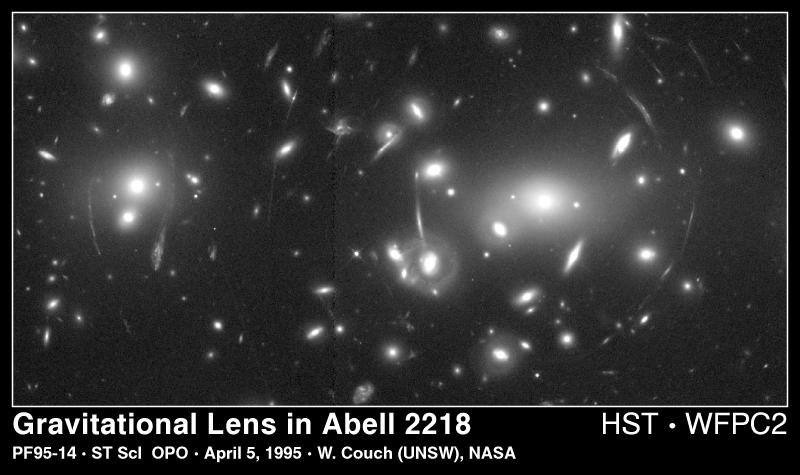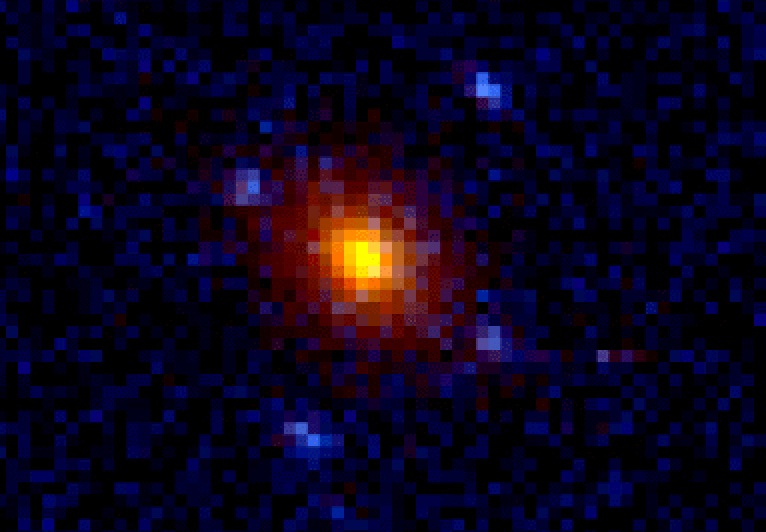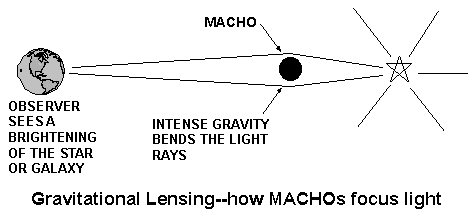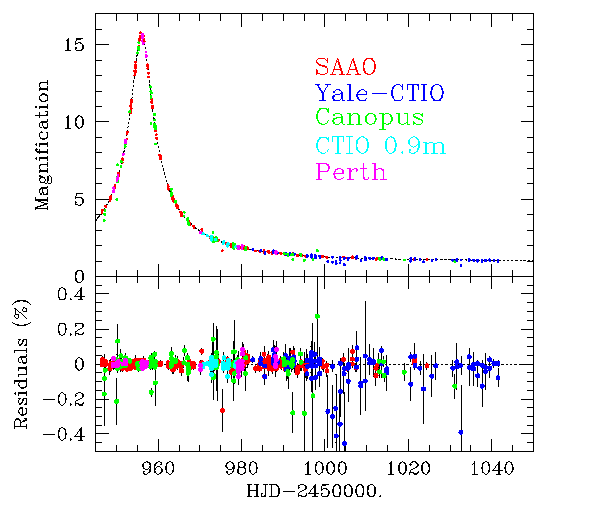

The above photograph, taken with the Wide Field Planetary Camera of the Hubble Space Telescope, shows a rich cluster of Galaxies, known as Abell 2218. In addition to a few thousand galaxies, this cluster contains a great deal of dark matter - a mixture of hot hydrogen gas and so-called non-baryonic dark matter - thought to be e.g. a new form of extremely light elementary particle which interacts very weakly with other matter. Such dark matter particles - predicted by theory, but yet to be directly detected by experiment - are known as WIMPs: weakly interacting massive particles. We can detect the presence of such dark matter indirectly, however, because of the effect which the gravitational pull of the dark matter has on light from background galaxies. This effect is known as gravitational lensing, and was predicted by Einstein's general theory of relativity. We can see clear evidence of gravitational lensing in the photograph above: images of galaxies far behind the Abell cluster are distorted by dark matter in the cluster, and appear as arcs. Careful analysis of the shape and size of these arcs allow us to deduce the amount of dark matter in the cluster - a measurement which has important consequences for theories of galaxy formation and for determining the eventual fate of the Universe.
We see dramatic examples of gravitational lensing in the light from distance quasars, many billions of light years distant, which is lensed by the presence of a massive foreground galaxy or cluster to produce multiple images of the quasar. The background quasar and foreground lens are aligned just right, an Einstein cross of lensed images may be produced, as seen in the image below.

We also see evidence of gravitational lensing slightly closer to home, when we study stars in the bulge of our own galaxy and in the neighbouring Large Magellanic Cloud. Light from these stars is distorted by dark matter in the halo of our galaxy - possibly in the form of compact objects such as brown dwarfs or planets, which we refer to as MACHOs (= MAssive Compact Halo Objects). We call this phenomenon gravitional microlensing, since the bending of light from the background star is very small, and produces only a temporary brightening of the starlight rather than a visibly distorted image.

Gravitational microlensing monitoring programs provide a powerful new technique for studying the atmospheres and photospheres of distant stars, and for searching for extra-solar planets. Below is an example of the microlensing light curves obtained by the PLANET collaboration, from 24 hour intensive monitoring of a microlensing event using Southern hemisphere telescopes covering 360 degrees in longtiude. Such well-observed light curves allow stellar atmosphere models to be tested in a way which would be impossible using conventional telescopic observations.
